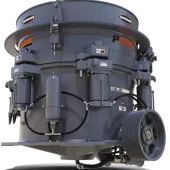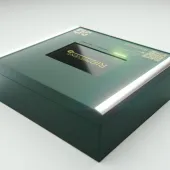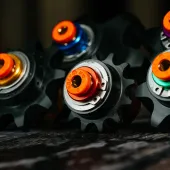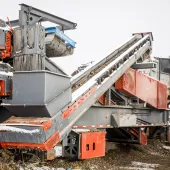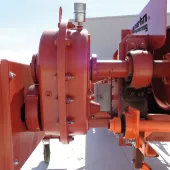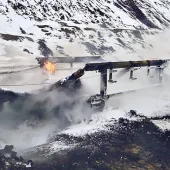Impact cradles from Martin Engineering
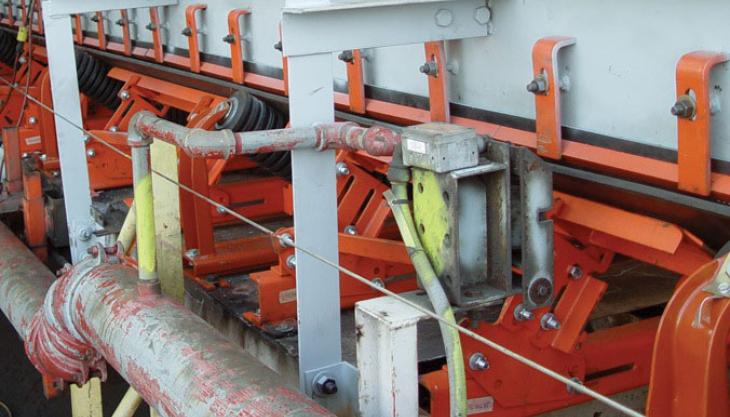
Cradles designed to prevent conveyor belt and mainframe damage and eliminate spillage of materials
IMPACT cradles from Martin Engineering come in three versions – heavy duty (HD), medium duty (MD) and light duty (LD). All have been specially engineered to prevent belt and mainframe damage and eliminate spillage of heavy materials.
Martin impact cradles feature a bed of steel angles lined by energy-absorbing impact bars with a top layer of low friction, ultra-high molecular weight (UHMW) plastic. The result, says the company, is longer-lasting conveyor belts and components, less fugitive material and a safer work area.
‘Fine material discharged from height can have just as much force as a coarse load,’ said Daniel Marshall, product engineer at Martin Engineering. ‘Without proper impact absorption and distribution, all of that force is exerted on the belt, essentially crushing it against a rigid surface underneath. The impact beds absorb the energy, so the belt doesn’t have to. It also creates a flat edge for the apron seal to prevent spillage and fugitive dust.’
The impact cradles are designed to be located at transfer points of receiving conveyors, under the hopper and chute box close to the tail pulley. Depending on the force of the discharged material, they can possess different structural qualities.
All three Martin impact cradles, however, feature wing supports which are adjusted to match CEMA standard trough angles, as well as a 5% fine-tuning adjustment angle. The company says this allows the cradle to accommodate the idler profiles of different manufacturers and ensures a tight belt seal.
The Martin HD impact cradle, the firm’s most rugged design, is able to withstand impact forces from 12,000 to 17,000ft/lbs (53.4 to 75.6kN) and drop heights of light material up to 50ft.
Support beams in the centre of the cradle are set 19mm below the receiving belt’s line of travel, allowing the belt to avoid sustained friction when running empty, yet absorbing significant impacts during loading while still retaining a tight seal.
The unit is equipped with between seven and 13 heavy-duty impact bars, depending on width. Installed perpendicular to the belt path, the bars are reinforced by a steel support structure with a base of impact-absorbing 50-durometer styrene-butadiene (SBR) rubber and a top layer of slick UHMW plastic.
The HD impact cradles are engineered to withstand dynamic energy and a heat range between –29°C and +60°C without compromising the structural integrity of the conveyor frame. The cradle is on Martin’s Trac-Mount, allowing it to slide out for easy bar replacement.
The Martin MD impact cradle is designed for medium-duty applications and suitable for use with belts travelling up to 1,000ft/min (5m/s). Mounted on four rugged steel I-beam supports, the cradle is able to sustain a maximum impact of 12,000ft/lbs (53.4kN) with light material drop heights up to 26ft. The cradle is available for belt widths from 24in to 72in (610mm to 1,828mm).
Depending on width, the MD cradle is fitted with between six and 16 durable impact bars. They are composed of an aluminium T-slot surrounded by energy-absorbing 83A-durometer urethane, coated with a layer of low-friction UHMW plastic, which prevents belt fraying, while retaining a tight seal at operating temperatures between –29°C and +82°C. Each bar is reinforced by bed of steel ‘wing’ supports, which can be adjusted to match any CEMA standard trough angle, with five degrees of wear adjustment.
Like the MD version, the Martin LD impact cradle conforms to CEMA No. 502-1998 and 575-2000, although this specific design is made for lighter materials with impact forces that could affect the belt and conveyor over time.
Utilizing the same impact bar technology, it is able to withstand a maximum impact force of 8,500ft/lbs (37.8kN). Mounted on three steel channel beams, the LD is available for belts from 24in to 48in (610mm to 1,219mm) wide, with six to 10 impact bars. The unit controls the spillage of dust and fines at belt speeds as high as 1,000ft/min (5m/s).



